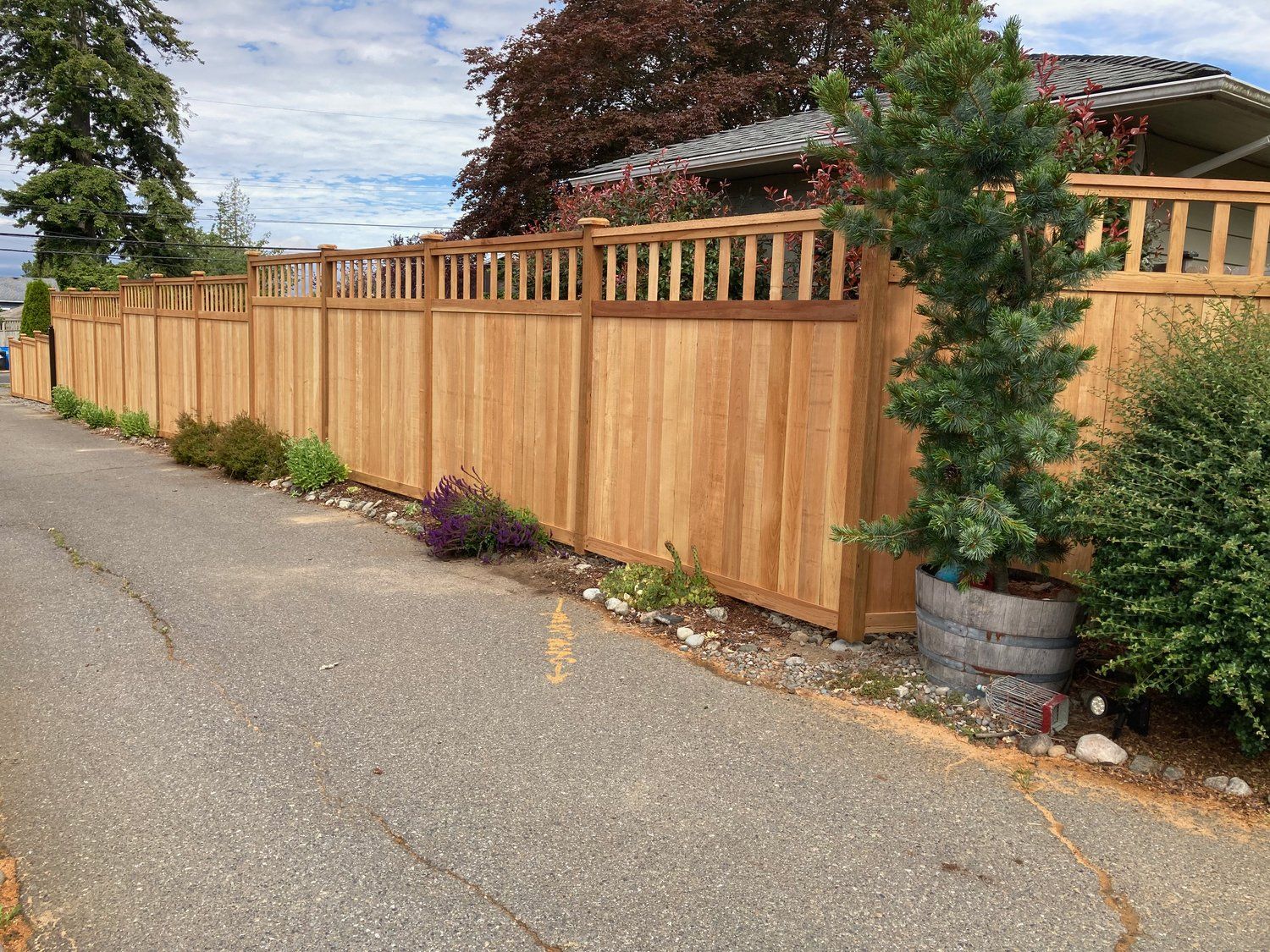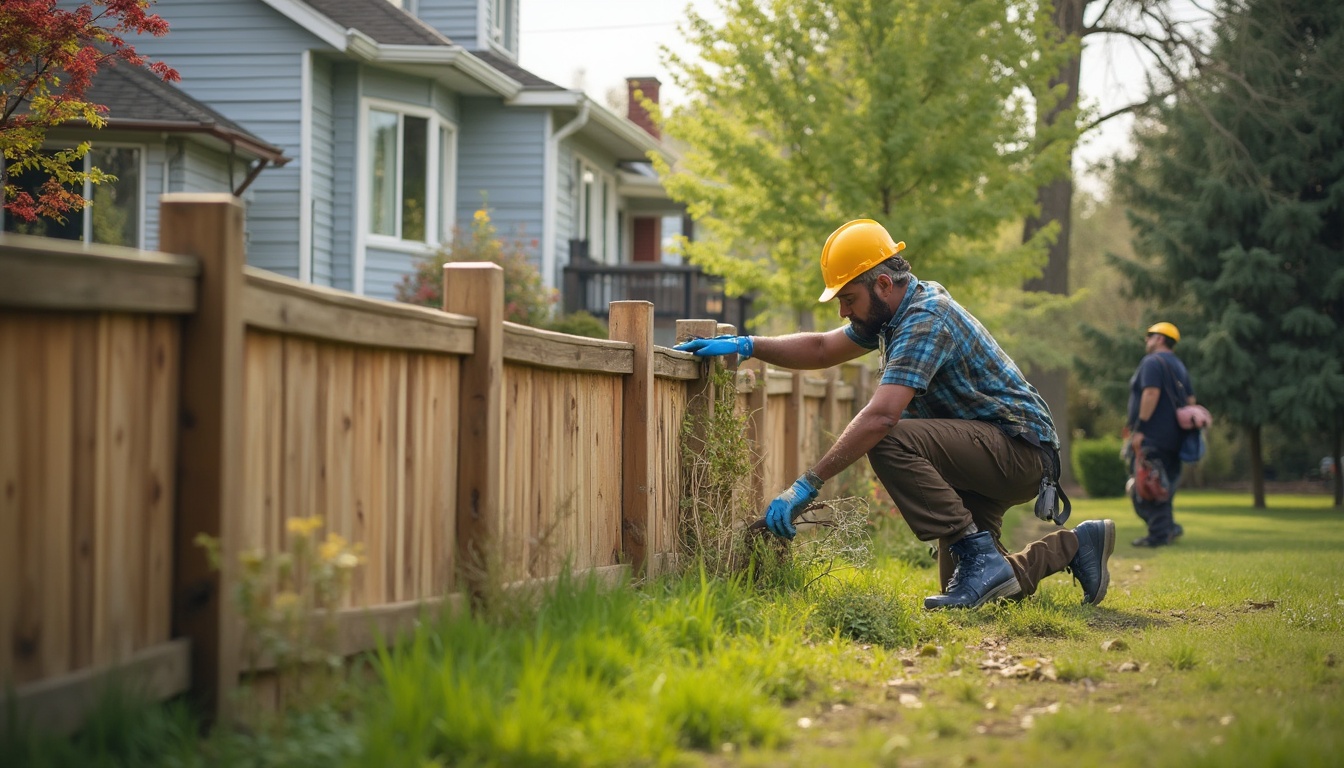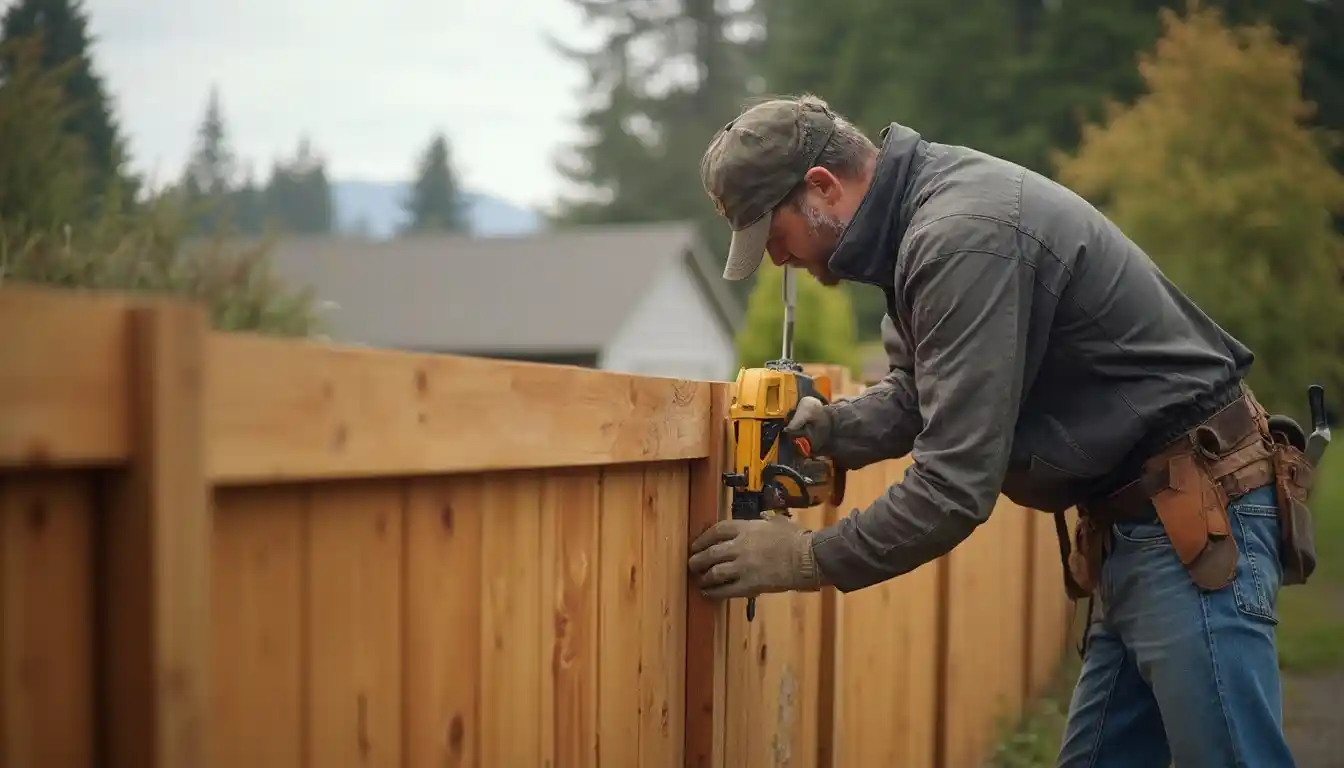Installing a fence requires knowing exactly where your fence property line is. Misplacing your fence can lead to legal issues and neighbor disputes. This guide will help you understand property line laws, how to mark your boundaries, and the regulations you must follow.
Key Takeaways
- Know your property lines before building a fence to avoid disputes; getting a professional land survey can help clarify boundaries.
- Comply with Washington state regulations on fence construction, including height limits and material guidelines, to ensure a lawful and sturdy fence.
- Communication with neighbors about shared fences and maintenance responsibilities is crucial to prevent misunderstandings and potential disputes.
Understanding Property Lines
Before starting your fence project, it’s vital to know your exact property lines. Understanding these boundaries ensures correct fence placement and helps prevent disputes with neighbors. Picture the frustration of building a beautiful fence, only to find it encroaches on your neighbor’s property.
A professional land survey is the most reliable method to clarify boundaries. Surveyors mark the corners of your land, giving a clear view of your property limits. Though it may seem tedious, this step sets a solid foundation for a smooth fence installation.
Legal Definition of a Lawful Fence
Complying with state regulations requires knowing what constitutes a lawful fence in Washington, according to Washington fence laws. A lawful fence must include at least four horizontal, properly stretched barbed wires, with the top wire positioned at 48 inches for effectiveness and sturdiness.
Wire spacing is also crucial. Barbed wires must be placed at 12, 22, and 32 inches below the top wire, ensuring the fence can contain livestock and prevent unauthorized entry. If fence posts are spaced more than 16 feet apart, additional support with stays is required.
An inspector will assess the construction to ensure it meets these requirements, validating compliance and providing peace of mind that your new fence is built to last.
Boundary Line Agreements with Neighbors
Good fences make good neighbors, but only with mutual understanding. Notify your neighbors in writing before building a fence on or near the property line. This fosters open communication and helps prevent misunderstandings.
In Washington, having a written agreement outlining maintenance duties and shared costs for boundary fences is advisable. Both parties should agree on responsibilities to keep the fence in good condition. This collaborative approach spreads the cost and strengthens neighborly relations.
Local Zoning Ordinances Compliance
Navigating local zoning ordinances is crucial for any fence project. These laws can dictate the maximum height of your fence and the materials you can use. Consult your local zoning department to avoid legal issues.
Each locality may have different restrictions, making it vital to understand these nuances, including the fencing laws. For instance, the maximum fence height in Washington is typically six feet, but this can vary by area. Certain materials might be preferred or prohibited, affecting your choices and budget.
Consulting with your local building department ensures your fence complies with all relevant regulations.
Fence Placement Regulations
The placement of your fence is as important as its construction. In Washington, fences must be installed along the property line without obstructing views, respecting boundaries while maintaining safety and aesthetics.
Fences cannot be placed on public properties like sidewalks or roads. Moreover, they must not block visibility for drivers and pedestrians. These regulations ensure your fence serves its purpose without causing public inconvenience or safety hazards, in accordance with local fence laws.
Fence Material Guidelines
Washington State allows flexibility in choosing fence materials, but they must meet strength and durability standards. While wood, vinyl, and metal are popular, barbed wire remains a lawful option if properly constructed.
The focus is on construction quality rather than the specific material. As long as the fence is strong and durable, you can choose materials that fit your aesthetic and functional needs.
Fence Height Limitations
Fence height regulations are another critical consideration. Generally, front yard fences are restricted to a maximum height of four feet, while back and side yard fences can go up to six feet. These limitations help maintain neighborhood aesthetics and ensure safety.
For fences exceeding six feet, especially near steep slopes or waterways, you will need a permit. Always check local zoning ordinances to understand specific height restrictions and avoid future complications.
Shared Fence Maintenance Responsibilities
Shared fences can sometimes lead to disputes over maintenance responsibilities. In Washington, adjacent property owners share the duty of maintaining boundary fences and partition fence, including repairs and routine upkeep, ensuring the fence remains functional and aesthetically pleasing.
If one neighbor neglects their part, the other can make necessary repairs on the neighbor’s property and seek reimbursement for half the cost. Prompt fence maintenance is crucial to avoid further deterioration and potential disputes.
Encroachment and Dispute Resolution
Encroachment issues can occur when fences inadvertently cross property lines. Washington’s encroachment laws protect property owners against unauthorized extensions. Misunderstandings about boundaries can lead to disputes and legal challenges.
The first step in resolving such neighbor disputes is direct communication with your neighbor. If discussions fail, mediation is often recommended before pursuing legal action. Washington law allows for injunctions against neighbors who build fences that violate property boundaries, making it crucial to understand the legal framework.
Permits for Fence Installation
Before installing a fence, determine if you need a permit. In Washington, permits are required for fences exceeding seven feet in height or masonry walls taller than four feet. Permit requirements can vary by county and city, so check with your local zoning department.
When applying for a permit, typically a simple site plan and detailed drawings of the proposed fence are required. Ensuring compliance with local regulations from the start can save you from future legal issues.
Special Requirements for Pool Fences
Pool fences have specific safety requirements. In Washington, a residential pool fence must be at least 48 inches high and completely enclose the pool. Gates must be self-closing and self-latching, with latches positioned out of children’s reach.
A white vinyl privacy fence is often recommended for its durability and aesthetic appeal. These regulations aim to prevent accidents and ensure safety around the pool area.
Livestock Containment Responsibilities
In Washington, livestock owners must secure their animals within their property to prevent them from straying. This includes ensuring the fencing is sturdy enough to contain larger animals like horses and cattle.
If livestock escapes and causes damage, the property owner is financially liable. These laws protect both the livestock and the surrounding community.
Recommendations for Dog Owners
Though not explicitly required by law, installing a pet-friendly fence is strongly encouraged for dog owners in Washington. A secure fence allows dogs to exercise and play freely, reducing boredom and behavioral issues.
Materials like wood, particularly Cedar, and vinyl are popular for their functionality and low maintenance.
Summary
Understanding fence property line laws is essential for any homeowner looking to build or maintain a fence. From defining property lines and lawful fences to complying with local zoning ordinances and resolving disputes, each step is crucial in ensuring a successful project.
By following these guidelines, you can build a fence that not only meets legal requirements but also fosters good neighborly relations. Remember, a well-constructed fence is an investment in your property’s security, privacy, and overall value.
Frequently Asked Questions
Do I need a permit to build a fence in Washington?
You’ll need a permit in Washington if your fence is over seven feet tall or if you’re building a masonry wall taller than four feet. It’s best to check with your local regulations to be sure!
What materials are allowed for building a fence in Washington?
You can build a fence in Washington using wood, vinyl, metal, or barbed wire, just make sure they meet the necessary strength and durability standards.
How high can I build my fence?
You can build your front yard fence up to four feet high, while back and side yard fences can go up to six feet without needing a permit. Just make sure to check local regulations, as they can vary!
What should I do if my neighbor refuses to share the cost of a boundary fence?
If your neighbor won’t chip in for the boundary fence, just go ahead and build it yourself and then ask them to reimburse you for half the expense. It’s a good way to handle the situation while keeping things civil.
Are there special requirements for pool fences in Washington?
Absolutely, pool fences in Washington need to be at least 48 inches tall and should have self-closing and self-latching gates for safety. Keeping these regulations in mind helps ensure a secure pool area.








